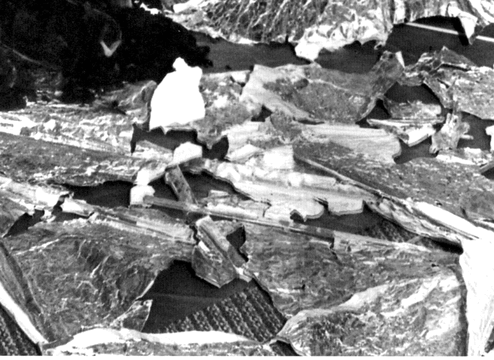In a nutshell I believe that a Fu-Go/Zeppelin inspired, American Nuclear Bomb delivery platform was being tested, possibly with occupants (chimps in high altitude suits) but I am struggling to establish if this is true (the occupants).
I have copied this across from another thread, it is a work in progress and there are many issue left to address.
I will try to compile a more clear and concise version (including exact AA/Flak range charts)
I have also revised the shape of the balloon depicted.
There is something about the timing of the Roswell incident, it is at least 5 years before the first U2 Flew and at least 7 years before the First ICBM (excluding the German tests of the
Projekt Amerika A9/A10 ICBM because they did not have a Nuclear Bomb).
It is important to note that in order for the American B-29s to deploy their Nuclear bombs, Saipan, Tinian and Guam had to be captured first. In other words it was not possible to fly fully loaded from America to Japan directly.
In 1947 although the B-50 was being Developed it still only had a range of about 2500 (two thousand five hundred) Miles (combat/loaded range) and the distance between New York and Moscow is about 4500 (four and a half thousand) miles. In short they could not directly strike each other using contemporary bombers.
My suggestion is of a FU-GO inspired balloon that could have potentially been a "stopgap" whilst ICBMs and longer range higher flying Bombers were being developed.
The above is a naive attempt to illustrate the potential of a balloon weapons platform.
1. The Canopy, I am no expert on balloon configuration, but my understanding is that the amount of weight a Balloon/s can lift is only limited by the size and capacity of said Balloon/s. I believe that a scaled down Warhead could be feasibly carried by a Balloon.
2. By 1947 Radio control was already quite advanced, and although technically "fly by wire" and of limited success "Operation Aphrodite" demonstrates the "outside of the box" thinking that was prevalent in this era.
3. It would be too dangerous to risk sending an armed warhead aloft with a Balloon so the ability to arm and fire remotely would be essential, and could be achieved using R/C.
4. Scaling down the Bomb would mean it required less lift to be carried up, resulting in a smaller Balloon/s.
I feel that it important to address the issue of "aiming" such a device/s. I fully understand that winds are unpredictable and can result in Balloons being blown off course, however if you were to send a multitude at once from different locations, a percentage would make the target area. It is important to note that radio triangulation had been used by the RAF for precision bombing (Mosquito) code name "OBOE" and this could realistically be used to track the balloon/s position, and arm and fire once in the target area, also if the bomb was detonated at altitude the fallout would be spread over a huge area.
The device I have depicted is very basic, however the scientists captured during operation paperclip would have been familiar with "zeppelin"/Balloon technology given that Zeppelins were used by the Germans in WWI and their psychological effect had been well documented, they also had experience aiming "dumb" rockets like the V1 which was essentially just a flying bomb that fell from the sky when its fuel ran out, part of the terror factor of this weapon was its random nature.
Several FU-GO's had been recovered by the US but given that Japan was part of the axis, I wonder if they had gained this knowledge from German Scientists?
I am convinced that it was something more than a "listening device" because of the miss handled cover-up which I feel was in part intended to "worry" the Russians. That is to say I believe that the intention was to convince Russia that the US was in possession of a weapon that could not be countered with "conventional" technology i.e Anti Aircraft Guns or Interceptor/Fighters. SAMs that could reach the altitude of a balloon did not appear until the 1950s (Project Nike).
I should also mention that the US already had done a lot of research into balloons and that in 1935 the manned Balloon "Explorer II" reached an altitude of 22.066 km (72,400 ft) well beyond the range of any counter measure until the 1950s.
Apologies for any spelling or terminology mistakes.


